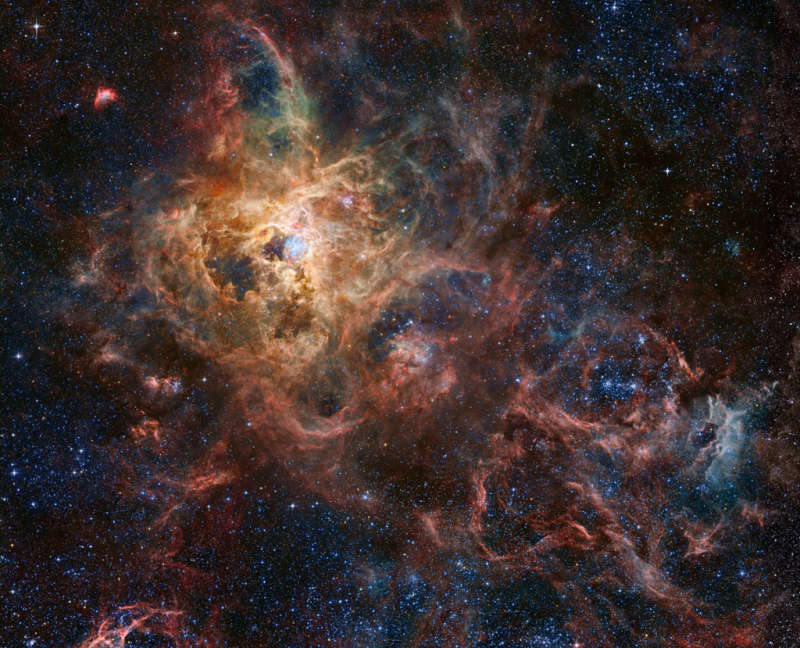Credit & Copyright: Processing -
Robert Gendler,
Roberto Colombari
Data - Hubble Tarantula Treasury, European Southern Observatory, James Webb Space Telescope, Amateur Sources
Explanation:
The Tarantula Nebula,
also known as 30 Doradus, is more than a thousand light-years in diameter,
a giant star forming region within nearby satellite galaxy the
Large Magellanic Cloud.
About 180 thousand light-years away, it's the largest,
most violent star forming region known in the whole Local
Group of galaxies.
The cosmic arachnid sprawls across
this magnificent
view,
an assembly of image data from large space- and ground-based telescopes.
Within the Tarantula (NGC 2070),
intense radiation, stellar winds, and supernova shocks
from the central young cluster of massive stars cataloged as R136
energize the nebular glow and shape the spidery filaments.
Around the
Tarantula are other star forming regions with
young star clusters, filaments, and blown-out
bubble-shaped clouds.
In fact, the frame includes the site of the closest supernova in modern times,
SN 1987A,
at lower right.
The rich field of view spans about 2 degrees
or 4 full moons, in the southern
constellation Dorado.
But were the Tarantula Nebula closer, say 1,500 light-years distant like
the Milky Way's own star forming Orion Nebula,
it would take up half the sky.
Data - Hubble Tarantula Treasury, European Southern Observatory, James Webb Space Telescope, Amateur Sources
1999 2000 2001 2002 2003 2004 2005 2006 2007 2008 2009 2010 2011 2012 2013 2014 2015 2016 2017 2018 2019 2020 2021 2022 2023 2024 2025 |
Январь Февраль Март Апрель Май Июнь Июль Август Сентябрь Октябрь Ноябрь Декабрь |
NASA Web Site Statements, Warnings, and Disclaimers
NASA Official: Jay Norris. Specific rights apply.
A service of: LHEA at NASA / GSFC
& Michigan Tech. U.
|
Публикации с ключевыми словами:
LMC - Туманность Тарантул - Tarantula Nebula - БМО
Публикации со словами: LMC - Туманность Тарантул - Tarantula Nebula - БМО | |
См. также:
Все публикации на ту же тему >> | |
